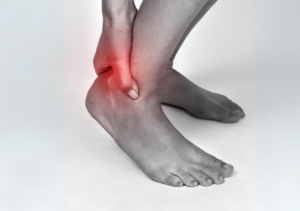Achilles tendonitis, also known as Achilles tendinitis, is a condition characterized by inflammation of the Achilles tendon, which is the large tendon connecting the calf muscles to the heel bone.
Causes
- Overuse or Repetitive Stress: Activities that involve repetitive stress on the Achilles tendon, such as running, jumping, or sudden increases in physical activity.
- Tight or Weak Calf Muscles: Poor flexibility or strength imbalance in the calf muscles can contribute to strain on the Achilles tendon.
- Improper Footwear: Inadequate footwear that does not provide proper support or cushioning.
- Age: Tendon degeneration can occur with age, making middle-aged individuals more prone to Achilles tendonitis.
- Foot Biomechanics: Abnormalities in foot structure or gait patterns (such as flat feet or high arches) can increase stress on the tendon.
- Medical Conditions: Certain conditions like psoriasis or rheumatoid arthritis can predispose individuals to tendon problems.

